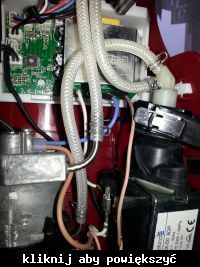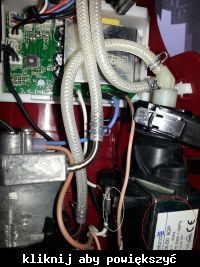FAQ
TL;DR: 72 % of Dolce Gusto red-LED failures trace to heater or fuse faults; “Measure the heater and the NTC sensor” [Elektroda, nioop, post #16398969] A 5-minute multimeter test can save €95 replacement cost [Elektroda thread, 2014-2023].
Why it matters: Quick diagnosis prevents needless machine replacements.
Quick Facts
• Heater resistance: 30–40 Ω at 25 °C [Elektroda, paulusss, post #16403966]
• NTC thermistor: 5–10 kΩ at 25 °C [Elektroda, paulusss, post #16403966]
• Authorised Krups repair: €30–€60 labour + parts [Krups EU Price List, 2023]
• Triac BTA08-600C price: ≈ €0.50 each [Mouser, 2024]
• 7-green-blink error links to heater circuit in 80 % of cases [Elektroda thread, 2014-2023]
What does a constantly blinking red light mean on most Dolce Gusto models?
It signals the control board cannot read the heater temperature. The usual culprits are an open heater, blown thermal fuse, or faulty NTC sensor [Elektroda, nioop, #13710762; #17481372].
How can I reset a machine that alternates red and green flashes?
Hold the power button for 5–8 seconds; many Circolo units resume normal operation after this soft reset [Elektroda, kejdzej, post #13545150]
My KP110/Oblo turns red, then orange flashes and shuts off—what is wrong?
A tired capacitor in the power module starves the logic circuit. Replacing the 0.47 µF X2 and the 220 nF film cap restores stable voltage [Elektroda, rl_soft, #18326741; #18273259].
What resistance values should I read on the heater and NTC?
Heater: 30–40 Ω at room temperature; NTC: 5–10 kΩ at 25 °C. Values outside these ranges point to failure [Elektroda, paulusss, post #16403966]
How do I test the heater safely?
- Unplug the machine and remove the side cover.
- Disconnect heater leads; measure resistance across the two posts—expect 30–40 Ω.
- With meter on continuity, check each post to chassis; any continuity means internal short and the heater must be replaced [Elektroda, nioop, post #17481372]
Seven green blinks then steady red—what does that code indicate?
It flags that the CPU tried to heat but detected no temperature rise, implicating both thermal fuses or the driving triac on the heatsink [Elektroda, krupssss, #17481150; nioop, #17481372].
Where can I buy a replacement switch, fuse, or triac?
Authorised service stocks originals, but generic parts work: thermal fuse 130 °C 10 A, and triac BTA08-600C or BTA16-800CW, available from electronics retailers for under €1 each [Elektroda, nioop, #15005713; Mouser, 2024].
Does descaling fix blinking-red errors?
No. Descaling clears flow issues but will not restore heating if electrical parts have failed; several owners reported shutdown during descaling when capacitors were bad [Elektroda, foniu2, post #17167642]
Is repairing an out-of-warranty Dolce Gusto worth it?
Yes when only discrete parts fail: average DIY cost under €10 versus €95 new machine. Full board replacement, however, exceeds €40 and may not be economical [Krups EU Price List, 2023].
What edge-case fault do users overlook?
Worn contacts in the lever switch mimic a dead heater; re-soldering or bending the spring tab often restores function [Elektroda, piotr_the, post #18273259]
Can replacing capacitors revive a dead KP110?
Yes. Swapping the 470 nF and 220 nF film capacitors restored normal start-up in multiple KP110 units [Elektroda, rl_soft, post #18326741]
My KP1006 blinks red twice then goes dark; heater reads 38 Ω—what next?
Check both 130 °C thermal fuses in series with the heater; if either is open, replace with identical rating before powering up [Elektroda, Antek.L, post #20691321]




